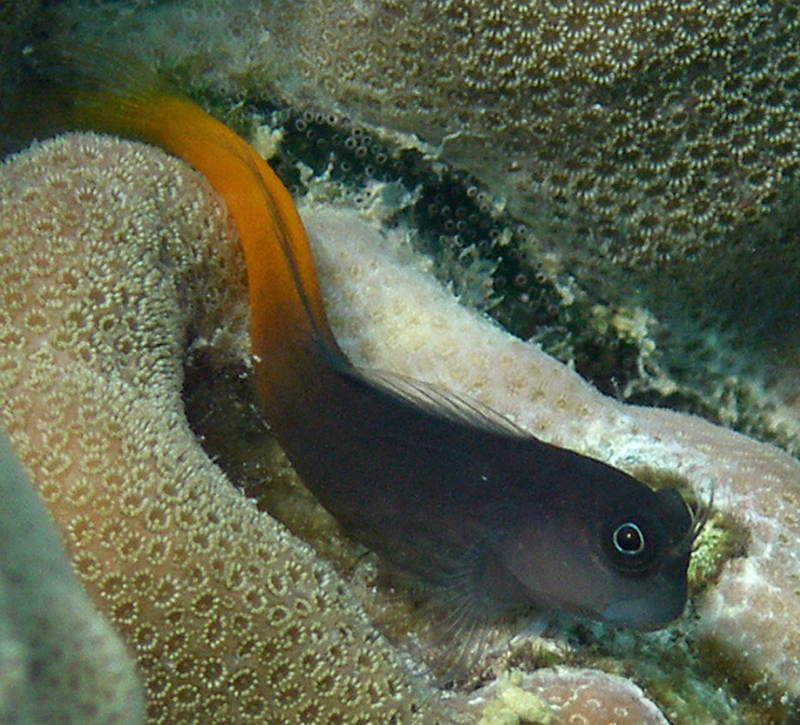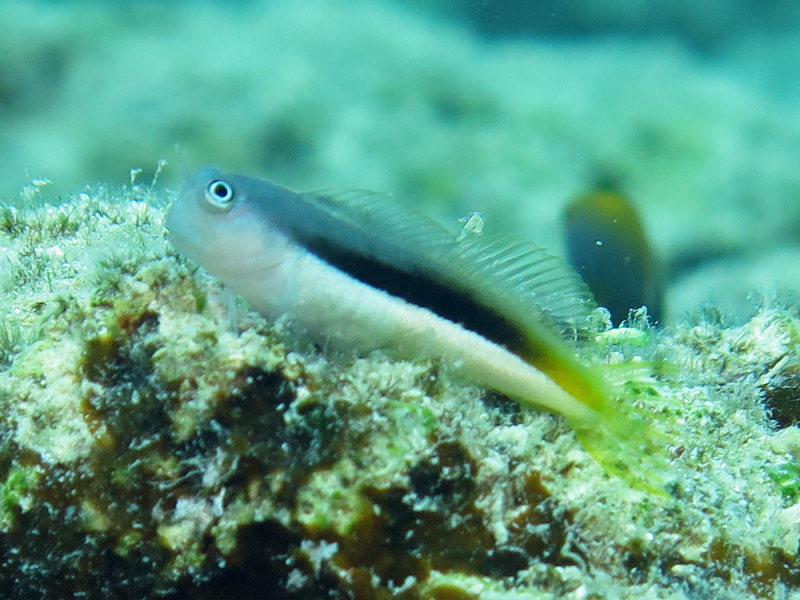Colours
Distinguishing features
A small fish usually found resting on the top of coral heads. Highly variable colour pattern but most common is dark grey front half, bright orange rear half. The white-belly variation (see photo) is less common at Lizard Island.
Size
- Up to 11 cm (Standard length)
Depth range
- Depth range data is not yet available.
Synonyms
Distribution
Distribution and habitat preferences
They are found in reef habitats not exposed to heavy wave action. They typically rest on the tops of massive Porites coral heads in shallow water.
Behaviour
The Bicolor Combtooth Blenny lives in small family groups on top of prominant coral heads and bommies. They rest on the pectoral fins in between bouts of feeding and chasing each other around the territory.
Diet
These fishes are mainly detritivores, combing small particles of organic material from the turf algae found inside the damselfish territories of Ward's Damsel and the Dusky Gregory, which typically farm algae on the tops of the bommies favoured by the blenny.
Web resources
References
- Caley, M.J. (1995). Community dynamics of tropical reef fishes: local patterns between latitudes, Marine Ecology Progress Series, 129: 7-18. LIRS catalog number 447.
- Caley, M.J. (1995). Reef fish community structure and dynamics: in interaction between local and larger-scale processes? Marine Ecology Progress Series, 129: 19-29. LIRS catalog number 448.
- Cheney, K.L. and N.J. Marshall (2009). Mimicry in coral reef fish: how accurate is this deception in terms of color and luminance? Behavioral Ecology, 20: 459-477. LIRS catalog number 1249.
- View all references






